Excerpts from Jim Conrad's
Naturalist Newsletter
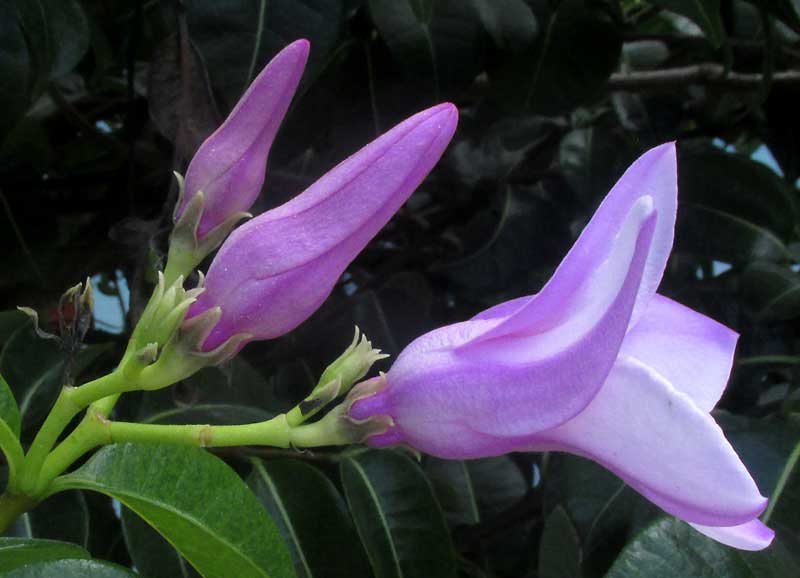
from the July 12, 2015 Newsletter issued from Río Lagartos, on the Yucatan Peninsula's northern coast (~N21.60°, ~W88.16°), Yucatán state, MÉXICO
MADAGASCAR RUBBERVINE
At a neighbor's house, two small trees out front add a touch of grace to the front yard, especially now that they bear pretty clusters of pinkish-purple flowers, as shown below:
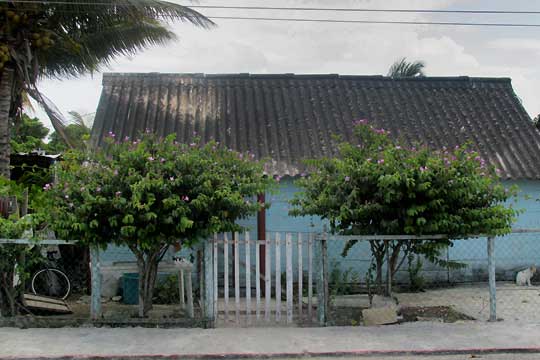
The 2½-inch wide (65mm) flowers usually cluster in irregularly formed groups of 1-5 blossoms, as seen below:
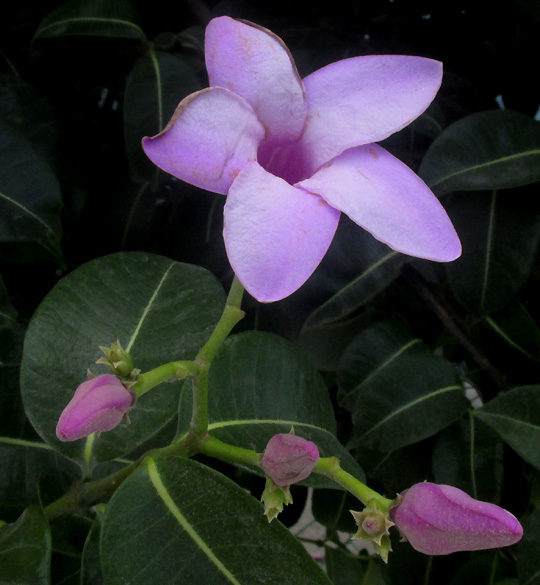
At the top of this page you can see how the flowers seen from the side display corolla lobes that elegantly swirl to one side.
Those familiar with northern wildflowers will note in the above photos that this plant's leaves look like those of milkweeds, and they even arise two per stem node opposite one another, like milkweeds. Moreover, if while photographing the flowers you knock off a leaf, white, milky latex exudes from the wound, as shown below:
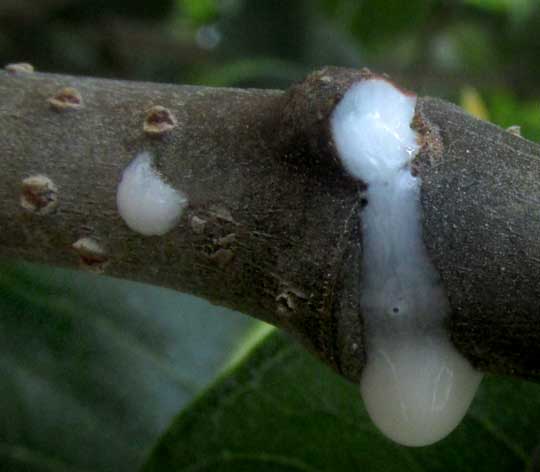
Milkweeds are now assigned to the Dogbane Family, the Apocynaceae, so once these details are noted the next step is to see if down in the flower's bottom the sexual parts display that family's unusual floral features. A broken-open blossom showing typical Dogbane-Family-type floral anatomy is shown below:
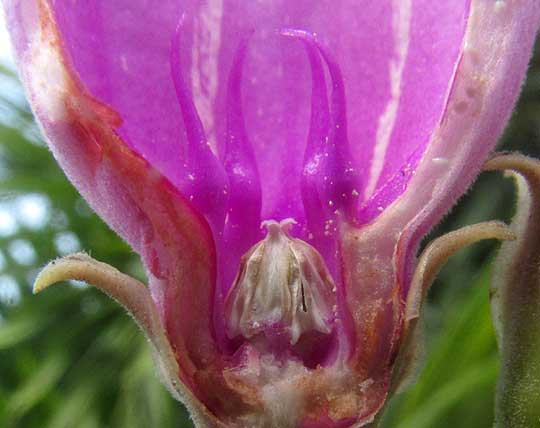
Though northern milkweed flowers don't have such large, spreading corollas, their sexual parts are very similar to what we see here. Mainly, the whitish, scale-like things in the center are pollen-producing anthers curving around and sticking to the large, flat-headed stigma beneath them. Milkweed flowers also bear "coronas" that emerge from the corolla and arc over the sexual parts. The slender, teardrop-shaped items above the whitish anthers are corona lobes and it's worth noting that the lobes gradually diminish toward their tops into a single slender, hairlike point.
Once it became clear that our plant was closely related to the milkweeds I expected its identification to be easy, for how many ornamental, milkweed-like, woody trees can there be? However, there were complications.
Mainly, our plant turned out to be the Madagascar Rubbervine, CRYPTOSTEGIA MADAGASCARIENSIS, and that "vine" in its common name was tricky. Nearly all the literature describes our plant as a woody climber or at most a scrambling shrub able to climb into trees 50ft high (15m).
Apparently my neighbor works hard to prune his plants so that they form trees. In fact, even the ones in his yard show signs of vinyness, displayed below:
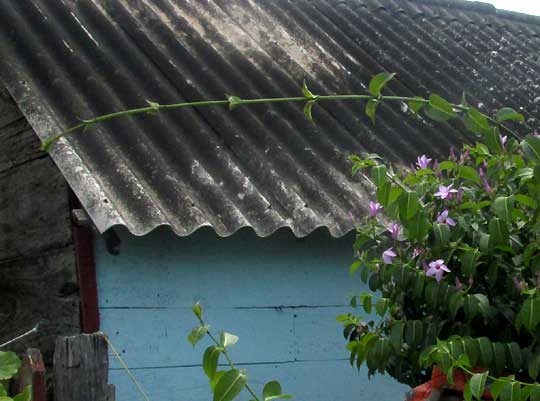
Here and there such sprouts shoot out, obviously "wanting" to find a support so it can climb higher. My neighbor isn't the only one in Río Lagartos who keeps his rubbervine in tree form; people here just prefer them that way.
The plants' tree form wasn't the only identification challenge. The genus Cryptostegia embraces two very similar species, both native to Madagascar, and both widely planted and often escaped in the tropics and subtropics to become unwelcome weeds, especially in Australia. Sometimes they hybridize. Fortunately, Jens Klackenberg's 2001 "Revision of the genus Cryptostegia," published in the journal Adansonia, is freely available on the Web in PDF format here.
In that work the most distinctive difference between the two rubbervine species appears to be that in the other species, Cryptostegia grandiflora, the slender corona lobes above the sexual parts are divided into two hair-like filaments, not remaining in one slender part like ours. Also, C. grandiflora's calyx lobes are longer than 13m, while those of our C. madagascariensis are shorter -- in ours only 9 or 10mm.
In much of the world, both rubbervine species initially were introduced not for their ornamental value but for the rubber that can be made from the plants copious white latex. The latex does produce good rubber, but at this time other sources are more economical for the manufacturing process and no efforts are being made to grow rubbervine for that use.
The latex is toxic, however, capable of killing large livestock that eat enough of it.